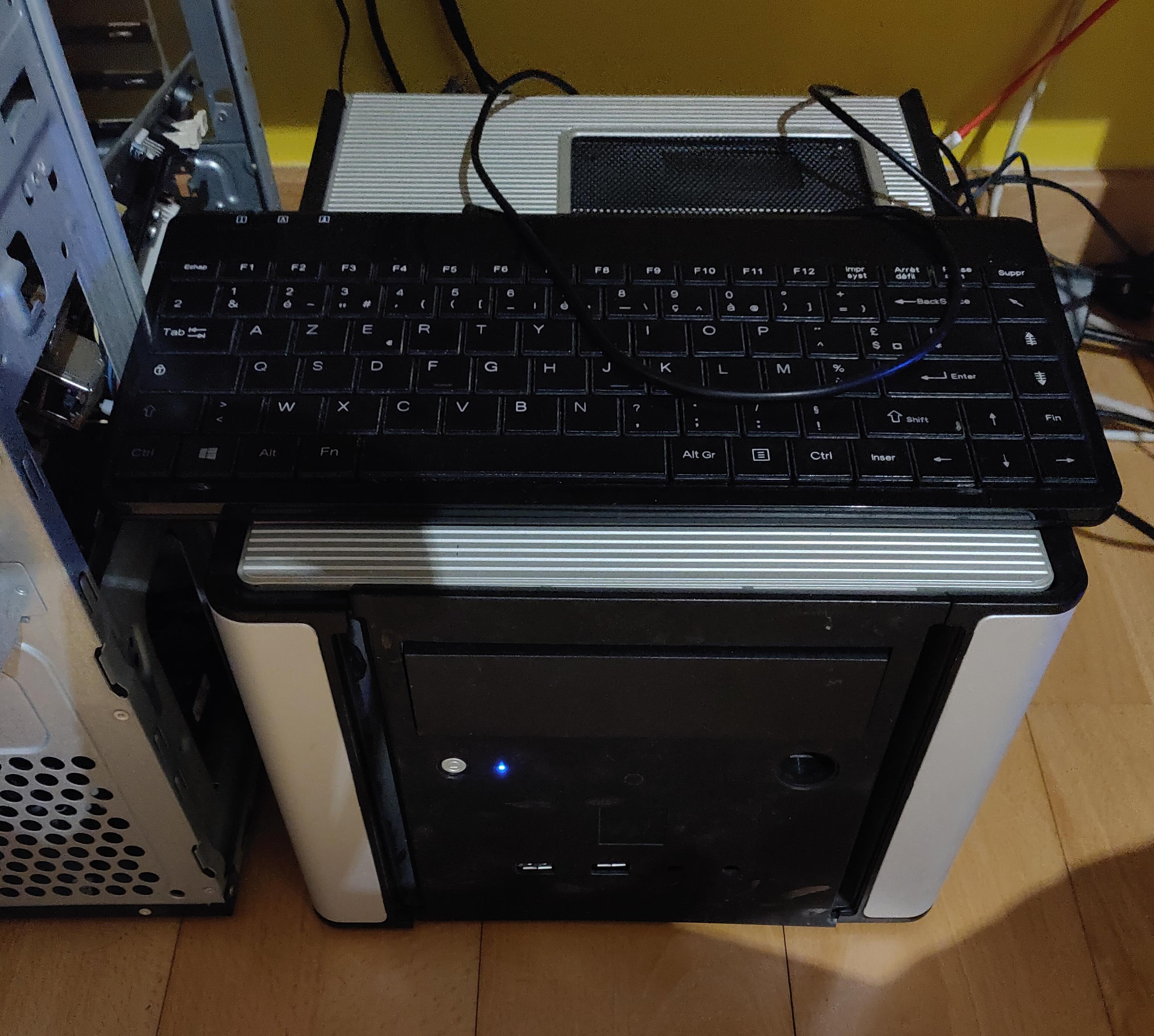Kubernetes under my desk
by Emile `iMil' Heitor - 2018-10-16
I’m diving into Kubernetes for a couple of months now. Discovering the possibilities and philosophy behind the hype definitely changed my mind. Yes, it is huge (in every sense ;) ) and it does change the way we, ex-sysops / ops / syasdmins do our work. Not tomorrow, not soon, now.
I’ve had my hands on various managed kubernetes clusters like GKE (Google Container Engine), EKS (AWS Elastic Container Service) or the more humble minikube but I’m not happy when I don’t understand what a technology is made of. So I googled and googled (yeah sorry Qwant and duckduckgo I needed actual answers), until I found >many >incredibly >useful resources.
Finally, after hours of reading, I decided to fire up my own k8s cluster “on premise”, or better said, under my desk ;).
With a couple of hardware I had here and there I built a good old Debian GNU/Linux 9 machine which will be my trustful home-datacenter.
There’s a shitton of resources on how to build up a k8s cluster, but many pointers and the experience of friends like @kedare and @Jean-Alexis put Kubespray on top of the list.
Long story short, Kubespray is a huge ansible playbook with all the bits and pieces necessary to build a high-available, up-to-date kubernetes cluster. It also comes with a Vagrantfile which helps with the creation of the needed nodes.
By default, vagrant uses VirtualBox as its virtual machine provider, using kvm makes it faster and well integrated into our Debian system.
Here is a great tutorial on setting up such a combo.
Contrary to official Kubespray documentation guidelines, I used virtualenv to install python bits, which is cleaner.
Some notes about how to run or tune Vagrantfile:
- Can’t have less than 3 nodes, the
playbookwill fail at some point - Each node can’t have less than 1.5G RAM
- CoreOS has no libvirt vagrant box, stick with
ubuntu1804 - When the cluster is created with
vagrant, ansible inventory is available atinventory/sample/vagrant_ansible_inventory - Even if
disable_swapis set totrueinroles/kubespray-defaults/defaults/main.yamlit remains active, preventingkubeletto start.journalctlshowed the following :
Oct 15 06:17:36 k8s-01 kubelet[2140]: F1015 06:17:36.672113
2140 server.go:262] failed to run Kubelet: Running with swap on is not supported, please disable swap ! or set --fail-swap-on flag to false.
/proc/swaps contained:
[Filename Type Size Used Priority /dev/sda
2 partition 1999868 0 -2]
Which seems caused by those previous warnings:
Oct 15 06:17:47 k8s-01 kubelet[2369]: Flag --fail-swap-on has been deprecated,
This parameter should be set via the config file specified by the Kubelet's --config flag.
See https://kubernetes.io/docs/tasks/administer-cluster/kubelet-config-file/ for more information.
Simply fix this by executing:
$ ansible -i inventory/sample/vagrant_ansible_inventory kube-node -a "sudo swapoff -a"
$ ansible -i inventory/sample/vagrant_ansible_inventory kube-node -a "sudo systemctl restart kubelet
$ ansible -i inventory/sample/vagrant_ansible_inventory kube-node -a "sudo sed -i'.bak' '/swap/d' /etc/fstab
Enable localhost kubectl in inventory/sample/group_vars/k8s-cluster/k8s-cluster.yml
kubeconfig_localhost: true
kubectl_localhost: true
This will populate the inventory/sample/artifacts/ directory with the kubectl binary and a proper admin.conf file in order to use kubectl from a client able to reach the cluster. Usually, you’d copy it like this:
$ mkdir -p $HOME/.kube
$ cp inventory/sample/artifacts/admin.conf $HOME/.kube/config
$ sudo chown $(id -u):$(id -g) $HOME/.kube/config
From here, you’ll be able to use kubectl in the actual host.
You may want to connect from another host which has no direct route to the cluster, in such case simply use kubectl as a proxy:
$ kubectl proxy --address='0.0.0.0' --accept-hosts='.*'
And voila:
$ kubectl get nodes
NAME STATUS ROLES AGE VERSION
k8s-01 Ready master,node 1d v1.12.1
k8s-02 Ready master,node 1d v1.12.1
k8s-03 Ready node 1d v1.12.1

(yeah, keyboard needed, mandatory F2 at boot because of missing fan…)